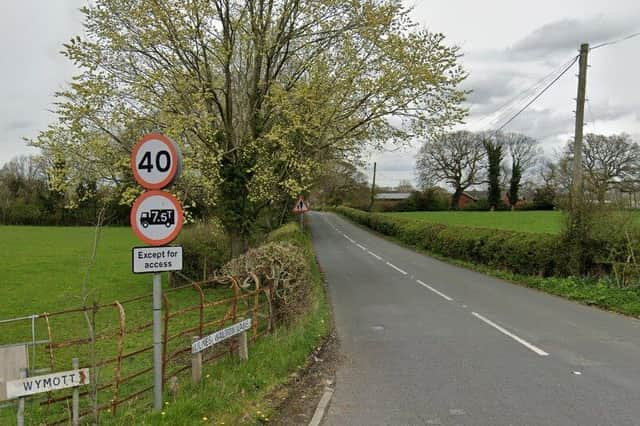'Up to 200 HGVs a day' will use country lane during building of new Chorley prison
and live on Freeview channel 276
An appeal against Chorley Council’s refusal of permission for the proposed jail, in Ulnes Walton, was rejected by a planning inspector for reasons which included concern over the ability of Ulnes Walton Lane to cope with such a significant increase in heavy goods traffic.


Although the Communities Secretary, Michael Gove, subsequently said he would be “minded to” go against the recommendation of that inspector and approve the development, he resolved only to do so if he could be assured a range of highway issues could be “satisfactorily addressed”.
Advertisement
Hide AdAdvertisement
Hide AdAt the ongoing inquiry to determine whether that is the case, Piers Riley-Smith - a barrister representing Chorley Council - said the concerns of the inspector, Tom Gilbert-Wooldridge, and Mr. Gove were based on projections of a six-week period during construction when there would be over 100 HGV movements per day.
However, he noted that revised modelling produced for the newly reopened inquiry showed there would actually be four months when daily HGV traffic would be “far in excess” even of that tally - citing days between July and October 2026 when between 174 and 199 HGVs could be on the move along the winding route.
Mr. Riley-Smith acknowledged that, “legally speaking”, vehicles in excess of the 7.5-tonne weight limit on Ulnes Walton Lane were allowed to travel the road in order to access any locations that lie along or off it.
However, in cross-examining Steven Yeates - a transport expert appearing on behalf of the Ministry of Justice - he added: “Access probably doesn't envisage…a hundred daily HGVs passing through it. It’s stretching the meaning of access slightly, don't you think?”
Advertisement
Hide AdAdvertisement
Hide AdMr. Yeates disagreed, insisting that the weight limit was simply to “deter through traffic”, not because of an inherent problem with the road, such as a weakness in it.
He also claimed that the lane had been used to create the Wymott and Garth jails in Ulnes Walton - built in the 1970s and 1980s - but was forced by Mr. Riley-Smith to concede that that was just his “assumption”.
Mr. Riley-Smith told the inquiry that for the 690 metres - out of 1,500 metres - of Ulnes Walton Lane where HGVs cannot pass each other when travelling in opposite directions, there were only two options for heavy goods drivers should they meet in that scenario: reverse or pull onto the verge.
He said that there were safety implications of both those actions on a route well-used by cyclists and where pedestrians also walked.
Advertisement
Hide AdAdvertisement
Hide AdHowever, Mr. Yeates said an alternative scenario would be that a lorry driver “see[s] the other HGV coming and…wait[s] for it to pass in an appropriate location”. He conceded that there would be “difficulty” if two such vehicles met at the bridge on Ulnes Walton Lane - but said even that could be dealt with by the use of Stop-Go boards or temporary traffic lights.
“My point is that I don't see that this road is unduly different to a lot of other roads in the UK, which are used for construction projects,” Mr Yeates said.
He added he was sure there would be occasions when the skills of the “professional driver[s]” in charge of the vehicles would need to be employed “to navigate the constraints in an appropriate way”.
The inquiry is due to conclude later this week, with the inspector set to visit the site next week.
Comment Guidelines
National World encourages reader discussion on our stories. User feedback, insights and back-and-forth exchanges add a rich layer of context to reporting. Please review our Community Guidelines before commenting.